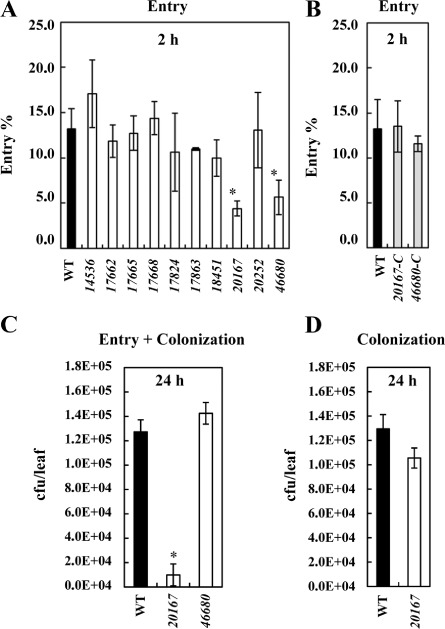Figure 5.

(A) Entry of Dd3937 wild‐type (WT) and mutant strains in Arabidopsis thaliana leaves. For each strain, 105 cells were placed on a wound. This process was repeated in 15 leaves from at least five different plants. Bacterial populations inside the leaf were estimated after 2 h. (B) Entry of Dd3937 WT and complemented strains in A. thaliana leaves. For each strain, 105 cells were placed on a wound. This process was repeated in 15 leaves from at least five different plants. Bacterial populations inside the leaf were estimated after 2 h. (C) Entry‐dependent colonization assay in A. thaliana leaves. 105 cells of WT or mutant (20167 and 46680) strains were placed on a wound. This process was repeated in 15 leaves from at least five different plants. Bacterial populations inside the leaf were estimated after 24 h. (D) Non‐entry‐dependent pathogenicity assay in A. thaliana leaves. 2 × 106 cells of WT or 20167 strains were infiltrated into the abaxial side of leaves. This process was repeated in 15 leaves from at least five different plants. The bacterial population inside the leaf was estimated after 24 h. cfu, colony‐forming unit. For (A–D), means and standard errors are shown. Error bars represent standard error of the mean (SEM). Asterisk indicates significant differences between WT and mutant population (estimated either as percentage entry or total population inside the leaves) determined according to Student's t‐test (P < 0.05). Similar results were obtained in three independent experiments.
